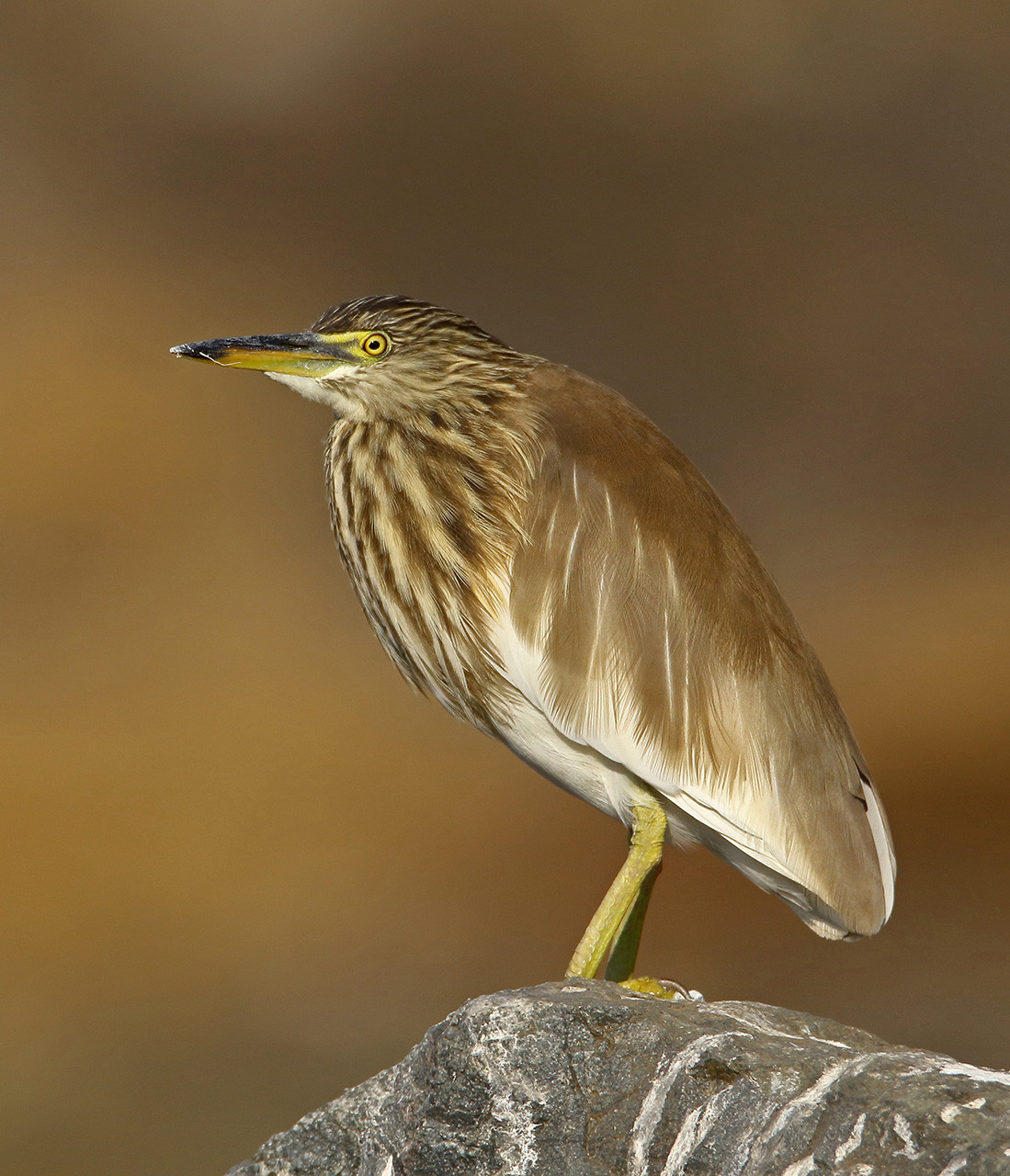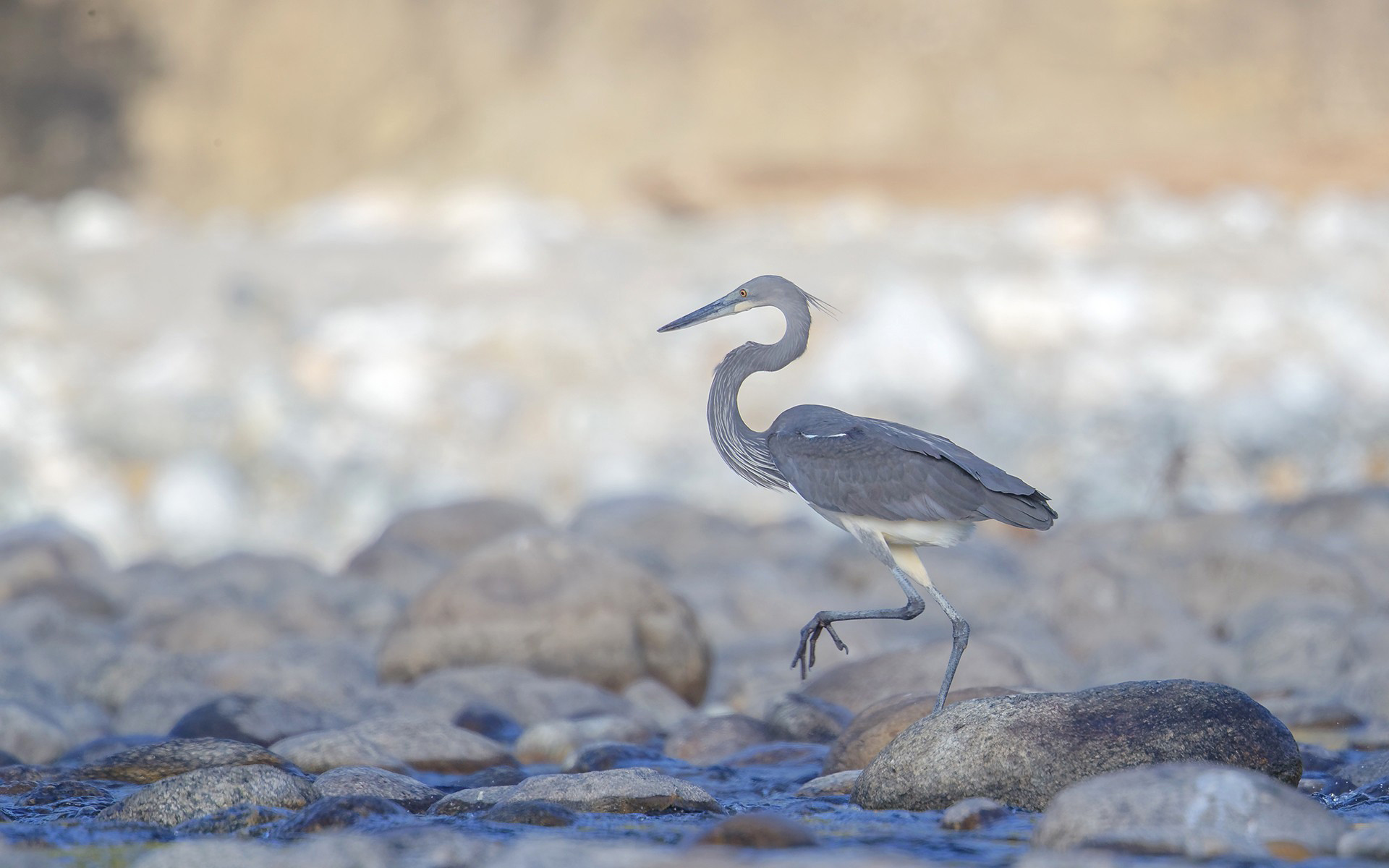While photographing wetlands, if you ever find yourself looking at a bird that appears to be studying the water with intense focus, you may have just spotted a member of the heron family. These medium and large-sized birds, characterised by their long neck and legs, are widespread and are found in all continents except for Antarctica. India is home to nine heron species, many of which are found across the country. While most of the heron species in India are designated as Least Concern from a conservation point of view, degradation of wetlands and pollution of water bodies are threats that impact local populations. The fact that heron populations and threats to them are not well-studied further confounds conservation of the species.
In 2020, Nature Conservation Foundation conducted the first-ever survey of the critically endangered White-bellied Herons across 81 sites in northeast India. The study found that various anthropogenic activities like sand/gravel mining, hydropower projects and garbage dumping impacted the sighting of the bird in specific regions. More importantly, the study highlighted that protection of herons needs more focused research and greater awareness among the public. This revelation comes to us at a time when we have lost a significant percentage of wetlands. According to the Wetland International South Asia, India has lost a third of its wetlands to pollution, developmental and agricultural activities in the last four decades. Herons are among the many birds that depend on these water bodies, which makes it imperative that we look at the species in isolation to devise better conservation practices suited to them.
In this story, we share some basic details and images of the herons of India. We hope that this encourages conversations and helps build awareness about their habitats and threats.
Black-crowned Night-Heron (Nycticorax nycticorax)
IUCN Red List Status: Least Concern (Population decreasing)
True to their name, Black-crowned Night-Herons are grey-white herons with a black crown and back, with short, yellow legs. Also known as the Black-capped Night-Heron, or simply Night Heron, the species occupies a range of habitats, including coastal regions, inland freshwater bodies, swamps and marshes. They prefer slow-moving or still water bodies surrounded by vegetation, where they forage for insects, fish and frogs. Black-crowned Night-Herons are seen throughout the Indian subcontinent, and wetland pollution and degradation are some of the biggest threats to the species.
Grey Heron (Ardea cinerea)
IUCN Red List Status: Least Concern
One of the larger heron species, Grey Herons are grey in colour, with a white crown and white and black markings on their underside and black feathers. They have an extensive geographical range globally and are found throughout the Indian subcontinent. They occupy a range of habitats, including mangroves, beaches, marshes, estuaries, inland freshwater bodies and damp grasslands. Depending on the habitat, they feed on fish, crustaceans, reptiles and small birds. Grey Herons can adapt their feeding and foraging behaviour based on their surroundings. Despite their widespread presence, local populations are endangered by habitat destruction and disturbance of nesting sites.
Purple Heron (Ardea purpurea)
IUCN Red List Status: Least Concern (Population decreasing)
A riot of chestnut, grey and brown colours makes it easy to identify the Purple Heron. The heron species has a narrow body and an elongated neck and head. Purple Herons are found throughout India and prefer reed swamps as their habitats. They are commonly seen near well-inundated water bodies with vegetation and are known to forage in deep waters. Purple Herons keep a close watch on the water while placing their bill close to the surface, ready to strike when the opportunity presents. They capture small and medium-sized fish and also feed on insects, frogs and reptiles. Habitat modification is a significant threat to the species.
Goliath Heron (Ardea goliath)
IUCN Red List Status: Least Concern
Largest among the Heron species, Goliath Herons, or Giant Herons, are identified by their chestnut-coloured head and neck and distinct dagger-shaped bills. Found in the northeast parts of the country, Goliath Herons prefer aquatic habitats and are seen close to rivers, marshes, swamps, mangroves, inland and coastal regions. These large birds generally tend to stay away from human-occupied spaces. They hunt along the shore or in vegetated parts and shallow areas of water bodies, standing still for hours as they wait for their prey. Goliath Herons mainly feed on fish, along with snakes, lizards, frogs and prawns.
Indian Pond-Heron (Ardeola grayii)
IUCN Red List Status: Least Concern
Found throughout the Indian subcontinent, the Indian Pond-Heron, or the Paddybird, sports a streaked appearance on its head and neck and has brown and black feathers. Pond-herons prefer shallow water bodies as habitats and are also seen near rice fields, irrigated agricultural land and man-made reservoirs. The bird is known to stand still, akin to a statue, while on the lookout for fish, frogs, insects, water bugs and beetles. Pond-herons are some of the most common heron species and are well-adapted to breeding and nesting near human-occupied spaces.
You may also like to read
Malayan Night-Heron (Gorsachius melanolophus)
IUCN Red List Status: Least Concern
The Malayan Night-Heron sports a distinct cinnamon-brown colour along with a black cap and a black line that runs down its throat. Also known as the Malaysian Night-Heron or the Tiger Bittern, breeding individuals exhibit a bright blue patch between the eyes and the bill. The nocturnal heron species resides in wet forests and prefers low to mid-elevation regions and are mainly found in parts of south and north-east India.. The bird forages along the edges of water bodies looking for earthworms, molluscs, beetles, lizards and frogs. Malayan Night-Herons rarely feed on fish.
Chinese Pond-Heron (Ardeola bacchus)
IUCN Red List Status: Least Concern
Mainly found in the eastern parts of the country, the Chinese Pond-Heron is sometimes mistaken for an egret when in flight due to its white wings and yellow feet. This heron species has a dark brown head and bluish-black colouration on its wings, clearly distinguishing it from all egrets. Commonly seen in paddy fields, the bird frequents shallow water bodies like riverbanks, streams and grasslands. Chinese Pond-Herons forage in water and on trees and feed on insects, worms, fish, frogs and even small birds.
Striated Heron (Butorides striata)
IUCN Red List Status: Least Concern (Population decreasing)
Identified by their distinct black caps, large bills and their striated appearance, Striated Herons prefer rivers and streams within forested areas, mangroves, coastal regions and lake margins as habitats. They are also known as Mangrove Herons, Little Herons and Green-backed Herons. Found all across the subcontinent, Striated Herons mainly feed on fish and can be seen in their signature crouched position near water bodies, patiently waiting for their prey. Although designated as Least Concern, local populations are adversely impacted by habitat fragmentation and pollution of water bodies.
White-bellied Heron (Ardea insignis)
IUCN Red List Status: Critically Endangered
Confined to northeast India, the White-bellied Heron or the Imperial Heron is the second-largest species in the heron family. The bird sports a distinctive stone-grey colour, dark grey feathers and a white belly. White-bellied Herons prefer large-tree forests next to wetlands as their habitats. They mainly feed on fish and hunt for them by standing still over water bodies. Conversion of forest land for developmental and agricultural practices and pollution and degradation of wetlands are some of the most significant threats to the species.













